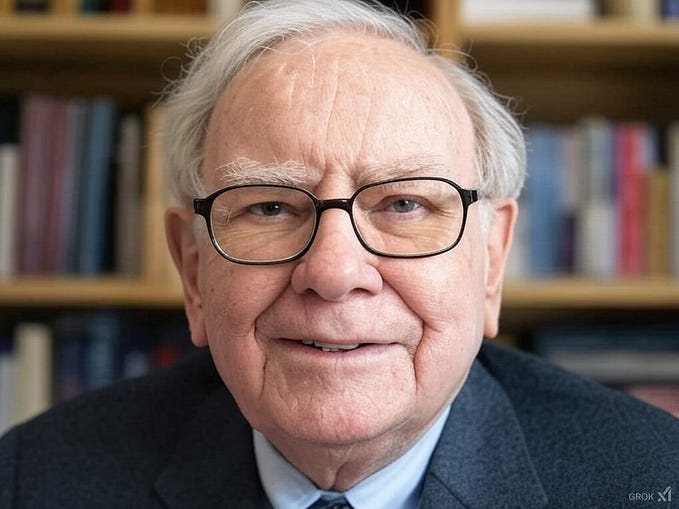OTD in History… September 5-October 26, 1774, the First Continental Congress meets in Philadelphia
By Bonnie K. Goodman, BA, MLIS

On this day in history September 5, 1774, twelve of the thirteen American colonies meet for the First Continental Congress in Philadelphia, Pennsylvania at Carpenter’s Hall. The colonies met in response to the British Parliament instituting the Coercive Acts, which colonists referred to as the Intolerable Acts. The Intolerable Acts included the Boston Port Act, the Massachusetts Government Act, the Administration of Justice Act, the Quartering Act, and the Quebec Act, meant to curtail the right of colonists, particularly in Massachusetts in retaliation for the Boston Tea Party. The First Continental Congress lasted until October 26, 1774, and featured 56 delegates from all the colonies except Georgia. The Congress was the first step towards the American Revolution and the colonies declaring independence less than two years later.
Since Parliament enacted the Stamp Act of 1765, Great Britain increasingly taxed the American colonies, which they objected because they had no representation in Parliament under the banner “no taxation without representation.” In response, the colonies met for the first time as the Stamp Act Congress in October 1765 objecting to the tax. In 1767, Parliament passed Townsend Duties named after Charles Townshend, the Chancellor of the Exchequer. The taxes covered imports including “glass, lead, paint, and tea,” taxing the colonists of external items rather than internally, and meant to stop the colonial trade of smuggling commodities. (Findling, 78)
After Townsend’s death in 1767 where he was replaced by Lord Fredrick North, the British Parliament repealed the duties in the 1770s, except they left the import taxes on tea. Americans were upset about Parliament taxing them for two reasons, the first was the mantra “no taxation without representation,” and Britain taxed colonists but gave favor to British taxpayers. The second reason was Britain wanted to pay colonials official taking paying and controlling them out of the colonial assemblies’ power.
In 1770, another incident further caused tension between the colonists and Britain. The Boston Massacre was where British armed troops fired at colonists “harassing customs officials,” where five colonists were killed. (Findling, 79) John Adams’ cousin Samuel Adams became a leading agitator among the colonists, calling for a democracy through writing “letters, pamphlets and newspaper articles.” Adams advocated an organization of Committees of Correspondence between the colonies, Thomas Jefferson and Patrick Henry joined Adams in the call for legislatures.
For two years, colonial protests remained relatively calm, until Britain passed the Tea Act on May 10, 1773. Parliament instituted the act to help the East India Company, who had an excess of tea, the act would remove duties to the colonies but would give the company a monopoly in sales. Colonists opposed the act because the East India Company had contracts with only specific merchants, it could undersell smuggled tea and could lead to Parliament granting the company a monopoly, and colonists feared Parliament would do the same for other commodities.
In the colonies, protesters prevented the East India Company from unloading or selling their tea, with East India Company’s consignees in New York and Philadelphia resigned. In Boston, Massachusetts, colonists took it a step further after the consignees repeatedly refused to resign, they protested and rioted. At the second town hall meeting at the end of November where over 1,000 attended resolved to send, the ships and the tea back to Britain and not pay the duty. In mid-December, Governor Hutchinson claimed the duty would have to be paid before the return trip. At town hall meetings in December, Samuel Adams pressured for the Dartmouth to return with levying the duty. On December 16, after Hutchinson refused to allow the ship’s return, Adams organized 150 men dressed as Mohawk Indians invaded three ships, the Dartmouth, Eleanor, and Beaver at the Boston Harbor, Griffin’s Wharf and overthrew £20,000 of tea into the water with thousands watching the spectacle, which became known as the Boston Tea Party. Neither did any British troops nor the governor intervened to stop the men. The local government refused to punish the protesters but in Britain, the House of Commons wanted to punish Massachusetts and assert power over the colonies.
The result was the four Coercive Acts. The Boston Port Act closed Boston Harbor until the cost of the tea was repaid. The Massachusetts Government Act took away their liberal democratic government, prevented town halls without the governor’s approval and legislators would no longer be elected by the public but appointed by the governor. The Administration of Justice Act, where British officials could not be tried in Massachusetts for capital offenses, the trials could only be held in another colony or sent back to Britain. The Quartering Act required colonists to provide lodging in their homes without compensation to British troops when within 24 hours of their arrival in a local. The colonists also found the Quebec Act a punishment since it permanently established a French Catholic colony with French Civil Law to the north of the thirteen American colonies. Colonists saw this as a border to prevent further territorial growth to the North. To enforce the acts Parliament commissioned British General Thomas Gage and four regiments of Red Coats to Massachusetts where Gage was appointed the governor.
After Britain dissolved the legislatures in Massachusetts, the Virginia House of Burgesses and the legislatures in New York and Pennsylvania, these colonies joined in patriot leaders from Massachusetts to reconvene a Congress as they did during the Stamp Act Crisis. When the First Continental Congress convened, they voted Virginian Peyton Randolph as the first president of Congress. The Congress included many revolutionary leaders as delegates including Patrick Henry, George Washington, John Adams, and John Jay.
Historian Jack Rakove in his book Revolutionaries, A New History of the Invention of America explains the significance of the First Continental Congress. Rakove writes, “On their own, Americans had created a new central political authority in the Continental Congress, which first met at Philadelphia in September 1774 and was set to reconvene in May 1775. Already observers were marveling that its decisions would be like the laws “of the Medes and the Persians, which must not be altered.” As yet that Congress was something less than a national government. But it was already becoming something more than the grand diplomatic assembly that the delegations to the First Continental Congress imagined they were attending.” (Rakove, 41)
The views of the Congress varied Conservatives among them Joseph Galloway, John Dickinson, John Jay, and Edward Rutledge wanted to petition Parliament to rescind the intolerable acts and to reconcile with Britain. On the more radical side Patrick Henry, Roger Sherman, Samuel Adams, and John Adams wanted the acts rescinded and the rights of the colonial charters returned. Henry went as far to suggest that the Congress should create a new government for the colonies independent from Britain, sowing the seeds of American independence, while Joseph Galloway suggested a “Plan of Union” for a colonial legislative body under Parliament.
The Congress decided on boycotting trade with Britain, Ireland and the West Indies. The Congress concluded with a Declaration and Resolves, where they formed a Continental Association. Henry E. Mattox in the book Events That Changed America in the Eighteenth Century explains, “The Continental Association established procedures for enforcing the commercial boycott; and what came to be known as the Declaration of Colonial Rights and Grievances conceded to Parliament limited authority to regulate the colonies’ commerce, but (in a clause written by John Adams) asserted the right of the colonies to govern themselves in matters of taxation and internal law; further, a measure demanded the repeal of the Coercive and the Quebec Acts.” (Findling, 90)
The Congress threatened to ban all British imports unless Parliament repealed the Coercive Acts by December 1, and if Parliament did not heed the colonies would refuse to export to Britain until September 1, 1775. For the boycott, they planned to establish Committees of Safety to enforce it and regulate prices. They also sent a petition to King George III requesting that he repeal the Coercive Intolerable Acts, and “demanding a return to the previous freedoms that they had enjoyed as loyal English subjects.” (Findling, 90) Congress ratified the petition on October 25, 1774. The committee to write the letter consisted of chair Richard Henry Lee, John Adams, Thomas Johnson, Patrick Henry, and John Rutledge.
Britain’s House of Commons gave little attention to the petition pushing it off to review after the Christmas holiday, and ignoring it afterward, while the King never responded. Although the Congress was the first step towards independence, they decided against the idea. Instead, the Congress showed they were still loyal to the monarchy, despite the colonies break and grievance with Parliament. Loyalty to the monarchy would be the stance the colonies would take as they inched towards independence in 1775, and even after the first battles of the Revolutionary War and the first shots fired at Lexington and Concord.
The Second Continental Congress tried the same approach with failure when they sent the King their Olive Branch Petition on July 5, 1775, just as they issued a Declaration of Causes and Necessity of Taking Up Arms placing General George Washington at the helm of the Continental Army. The First Continental Congress planted the seeds of rebellion, advising Massachusetts to form a democratic government and the colonies to prepare their militias for armed resistance against Britain. Locally they formed congresses and set up militias of Minutemen. Although the main point of the Congress was to address the Intolerable Acts, they moved towards independence by promising to reconvene a Second Continental Congress if the King refused their petition.
Historian Timothy H. Breen writing in his book American Insurgents, American Patriots, The Revolution of the People noted the significance of the movement towards independence, which started with the Boston Tea Party and the First Continental Congress in 1774. Breen indicates, “They demanded the kind of political representation that modern Americans celebrate. To be sure, the insurgents did not fight for democracy, but by inviting so many new participants into the political process on the local level and by rejecting a monarchical system of government, with its attendant aristocratic privilege, they transformed the colonial political culture. Thousands of Americans who had never before held office — indeed, who never even imagined that it was their right to do so — flooded into positions of leadership, and between 1774 and 1776 people from New Hampshire to Georgia invented new, highly effective forms of popular resistance. This ranks as one of the most creative moments in American political history.” (Breen 21–22)
The Second Continental Congress convened on May 10, 1775, with all thirteen colonies in attendance. The movement towards independence began in earnest in late 1775, when reconciliation with Britain seemed impossible with a banning of trade with the colonies. Benjamin Franklin started hinting of independence to France in December 1775; however, Independence talk reached a fever pitch when Thomas Paine published his pamphlet Common Sense in April 1776 arguing for independence. By June, the Continental Congress first brought a vote for independence finally doing so at the start of July. On July 2, the second Continental Congress meeting in the Pennsylvania State House in Philadelphia voted to sever ties with Great Britain’s monarchy and declare the 13 colonies independent; they ratified their vote on July 4, putting the former British colonies on an uncharted journey towards a new democratic independent country in a war with the world’s greatest power.
SOURCES AND READ MORE
Breen, Timothy H. American Insurgents, American Patriots: The Revolution of the People. New York: Hill and Wang, 2010.
Findling, John E, and Frank W. Thackeray. Events That Changed America in the Eighteenth Century. Westport, Conn: Greenwood Press, 1998.
Rakove, Jack N. Revolutionaries: A New History of the Invention of America. Boston: Houghton Mifflin Harcourt, 2010.
Bonnie K. Goodman has a BA and MLIS from McGill University and has done graduate work in religion at Concordia University. She is a journalist, librarian, historian & editor, and a former Features Editor at the History News Network & reporter at Examiner.com where she covered politics, universities, religion, and news. She has a dozen years of experience in education & political journalism.










